
You just saw an image at your Veterinarian’s office. “That can’t be right!” you think to yourself. “11, no wait there’s another spine, 12, and what about that head? 13! I see 13 puppies!” An inexperienced breeder might be elated. An experienced breeder knows there is a lot of work ahead. It is important to know that you can have very good results with a large litter.
The overwhelming likelihood:
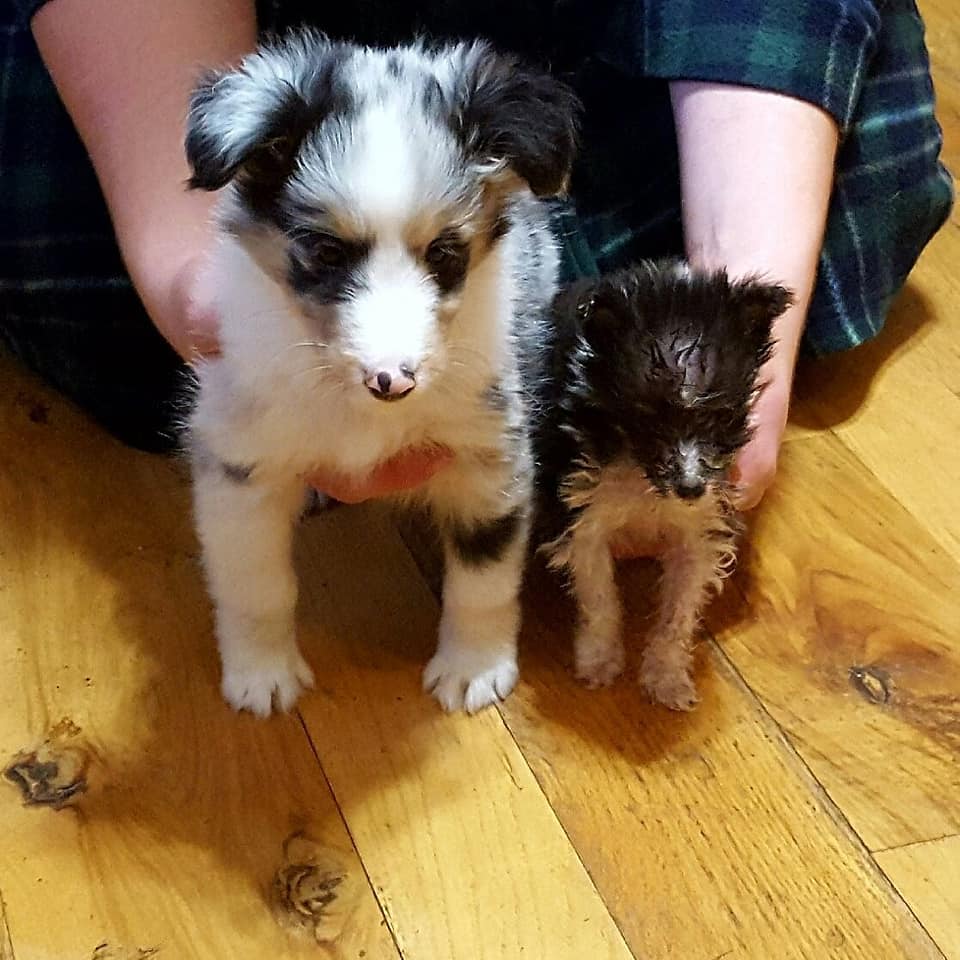
The larger the litter, the more likely you will have a Small for Gestational Age (SGA) puppy. If you have more than 10 puppies in a litter you may have multiple SGA puppies. SGA puppies can be defined as 40% or less of the normal birthweight. Often these puppies seemingly have no body fat. They can have great difficulty regulating their body temperature. Without precise environmental temperature regulation about 90% of SGA puppies pass in the first four days of life. With precise environmental temperature regulation and tube feeding, more than 90% can live long healthy lives.
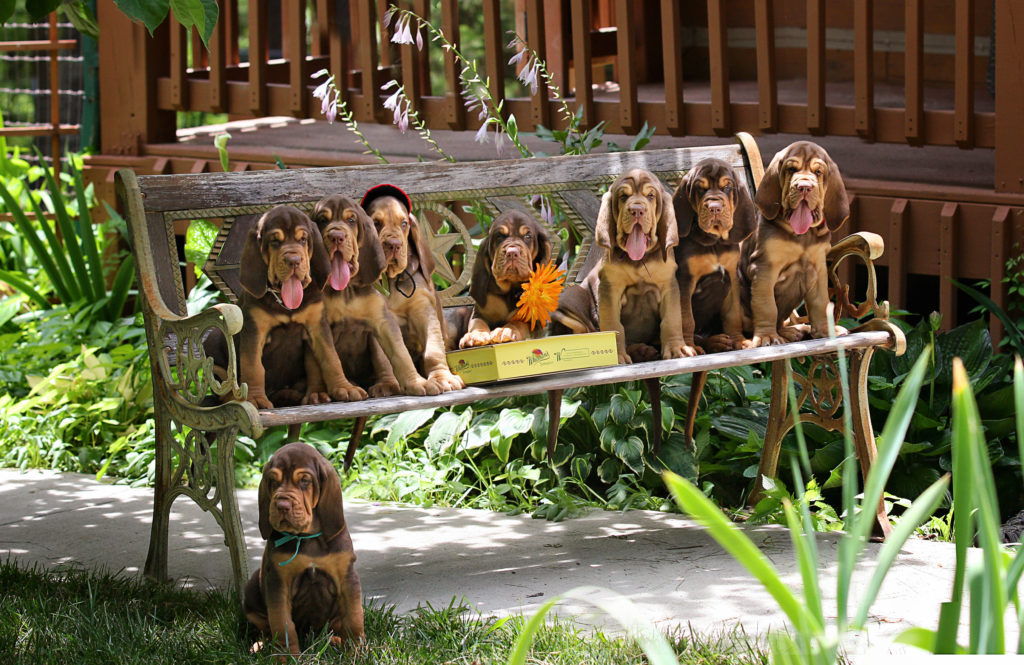
You are also very likely to see gasping puppies in a large litter. Gasping puppies are often the first born. In this case, they had very good nutrition in the womb. Their mass is larger, their shoulders broader, they are gasping because the journey through the birth canal was difficult ant they were born oxygen deprived (Hypoxia). The gasping is a reflex to bring more air into their bodies and subsequently bring more oxygen into their bodies. Without immediate oxygen available, about half of the gasping puppies survive. With oxygen delivered in the first seconds after birth, it is very rare to lose a gasping puppy.
If you opt not to have a planned C-section, you must be aware that a large litter is more likely to have an emergency C-section. Discuss options with your veterinarian. Have a plan for transportation. It is possible, some puppies might be bore, and then an emergency C-section is needed. Have a contingency plan.
Plan, don’t panic.
Planners save more puppies. Planners have the right tools and materials on hand. Planners consult with their veterinarians well in advance when they suspect a large litter. Planners take time to weigh the benefits and risks of a C-section.
Some of the items to have on hand are both essential and inexpensive:
- Delee mucus trap–gently and effectively clear the airways
- Feeding tubes–if your puppy does not have a strong sucking reflex, tube feeding is a highly effective way to deliver nutrition and help them gain strength
- Fresh frozen plasma, if you suspect insufficient colostrum intake, fresh frozen plasma can help build a strong immune system
- Method of uniquely identifying the puppies. Whether it be nail polish or another method–this helps you better track weights, and specific medications
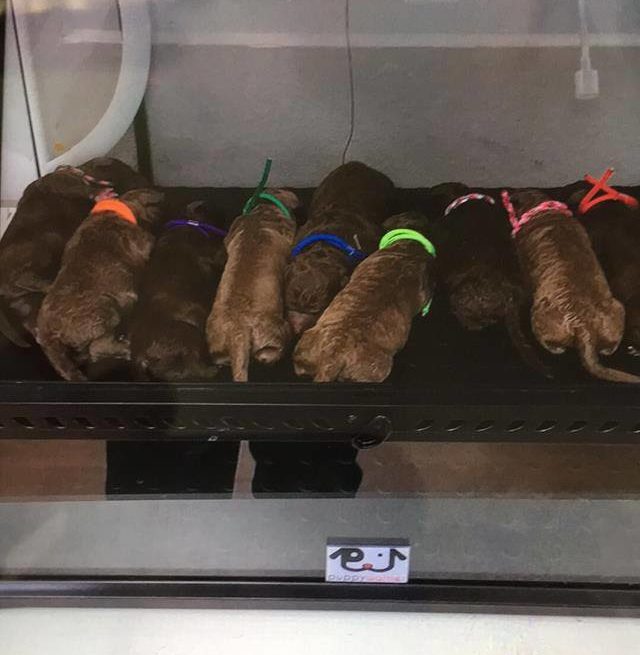
The above is not meant to be an extensive list. You can write a book on the subject. The good news is that someone has already done that–and a very good one.
Dr. Greer is a Puppywarmer customer. This book was written before Warmer3 introduced the Puppywarmer system. Puppywarmer is not mentioned in the book. If you hear Dr. Greer speak, and we highly recommend that you do, we are confident she will recommend Puppywarmer. Canine Reproduction and Neonatology is not a book you read to memorize. Rather it is a book you read to change the way you think about strategies of improving your lines and a book you read to know what to look for in the health of your puppy, and that techniques exist for situations you will likely face, and perhaps for some that you may never face. It is a book to highlight and tab–and read sections again when a large litter is coming due. This book will help you add to the list above, and practice techniques prior to the puppies being born.
Do I need an incubator? Do I need an oxygen concentrator?
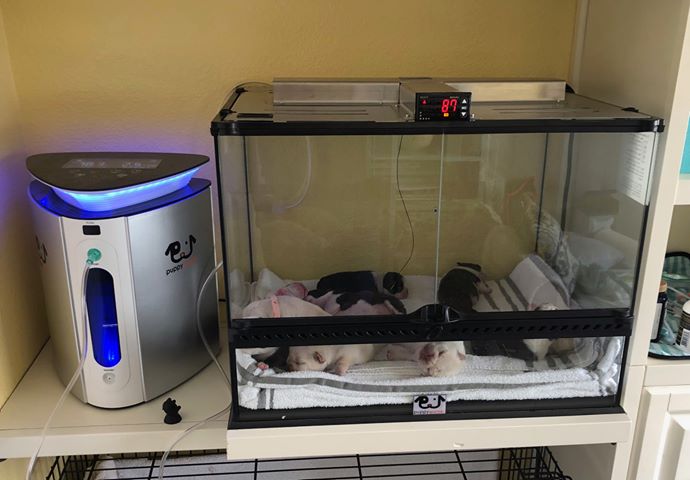
The short answer is “Yes.”
The difficult answer is that if your litter is born, and you are arranging for delivery of an incubator–it may be too late for some of the puppies. The first hours are essential for the development of a strong immune system. While many puppies have benefitted from delivery of an incubator when they are three days old, it is also true that they would have been stronger and other littermates likely would have survived if the incubator system was running at the time of birth. It is a delicate and heartbreaking discussion that we too often have to have. The incubator is an investment for all of your puppies from the day it arrives forward.
You need to have an incubator and oxygen concentrator on hand. It is best to have them on hand two weeks before the litter is due so you can familiarize yourself with the system. This is also important to do because, though rare, sometimes shipping damage can happen. Ordering two or more weeks in advance of a litter helps us make sure you have the equipment you need in the event the shipping company staff moves our large incubator with a forklift again.
You just don’t need “an” incubator, you need a really good one. You can call us. We can talk about it. The heater we use is built to our specifications and heats your puppy more deeply. The mat we use had been tested to work well with the spectrum of wavelengths the heater emits. Your puppy will feel warm all over because it is warm inside and out. Temperature is precisely controlled. We do not use convection heating which can dehydrate a puppy. Our heaters do not output visible light. Glass is easy to clean and disinfect and it creates a thermal gradient that allows puppies to fine tune their temperature.
Puppywarmer Oxygen concentrators are designed for small animal neonates. While they are capable of higher flow rates, we have restricted them to only puppy safe flow rates and .1 liter flow rate control.
The really good news…
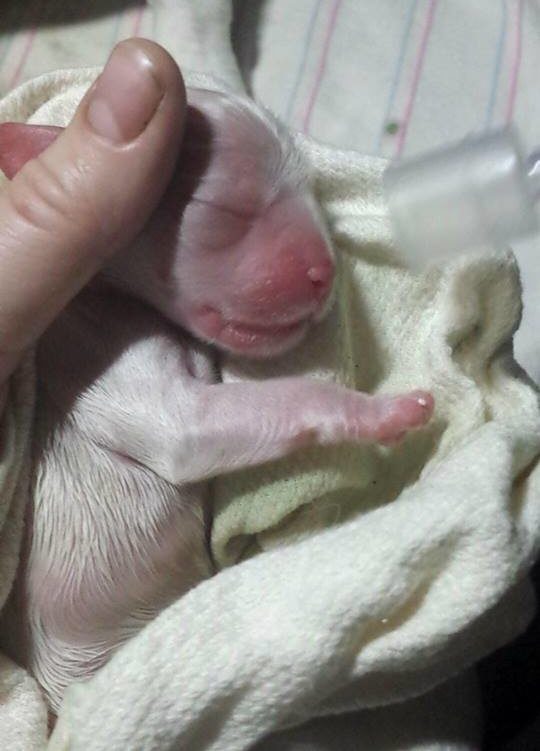
Gasping puppies almost always “pink up” within 45 to 90 seconds of applying oxygen. We suggest you keep a gasping puppy in the incubator about four hours after it stops gasping and is acting like a normal puppy.
We have seen more than a 90% success rate with SGA puppies. About half stay very small. About half grow to be within the range of normal. Many breeders say that SGA puppies are among the first to sell, apparently very popular with Baby Boomers that love the breed but want a “more portable” version. We have also been told that if you have a Grandchild with expressive eyes, the SGA puppy might just stay in the family. Because of the effort involved, many breeder really bond with an SGA pup–and try to keep the puppy local so they can see them again.
Incubator Strategies for a Large Litter:
It is a good idea to set the incubator for 90°F to 92°F until all are warm, dry and fed.
All pups can be placed in the incubator. The sequence should be: Warm, Dry, Fed, Warm. Neonates at the right internal temperature coming from an oxygen rich environment feed better. Warm puppies process colostrum better. This is essential to building a better immune system and maximizing weight gain.
We will often tell breeders to divide their litter into thirds:
- ⅓ will seemingly do well no matter what–These puppies can have 2-3 feeding cycles in the incubator then should be moved to a warmed whelping box.
- ⅓ should be observed to make sure they will do well–most will have the same 2-3 cycles of feeding as above, but could be monitored more closely. If sucking reflex is not strong, it is best to keep them in the incubator until sucking reflex improves. This may be a matter of just one or two feedings. If the puppy shows signs of acting as if it is cold in the whelping box (curled in a “C” or puppy piling, you can keep it in the incubator another day or two until it has a bit more weight gain.
- ⅓ need help from day one. Generally these are lower birth weight puppies. Often these puppies have difficulty regulating temperature. The key indicators of health of an SGA puppy are sucking reflex and weight gain. Some SGA puppies may take a few days to show significant weight gain. Some SGA puppies return to the litter in 3-5 days. Some take a little longer. Safety is another consideration. If a puppy is ¼ the size of its litter mates, it is possible normal activity could injure the puppy. In this case many breeders will keep the SGA puppy away from the larger litter. It is recommended to rotate in a puppy from the smallest third of the litter for socialization.
- Getting the larger, healthier puppies out of the incubator sooner helps the smaller, weaker puppies. The larger, healthier puppies take the best spots and nudge the smaller puppies away from the oxygen they need. The larger pups have larger lungs and exhale more CO2. Your strategy for the healthiest puppies impacts your success with the ones that need the most help.
- In the case of Bulldogs and French Bulldogs (where puppies are often in the incubator longer), breeders will often have two incubators. A large one (18×24’) that never leaves the house, and a smaller one (18×18” or 12×12”) that is both used as a transport and a way to separate out the SGA puppies.
- It is also important to note that with a large litter it is important to have your room temperature below 75°F. A large litter can creat a lot of its own heat. There needs to be heat loss from the incubator to the room for optimal performance. If the heater can run more, it helps the puppies. You may also need to raise the oxygen line and run 1.5 to 2 times the normal flow rate to help drive out CO2 .
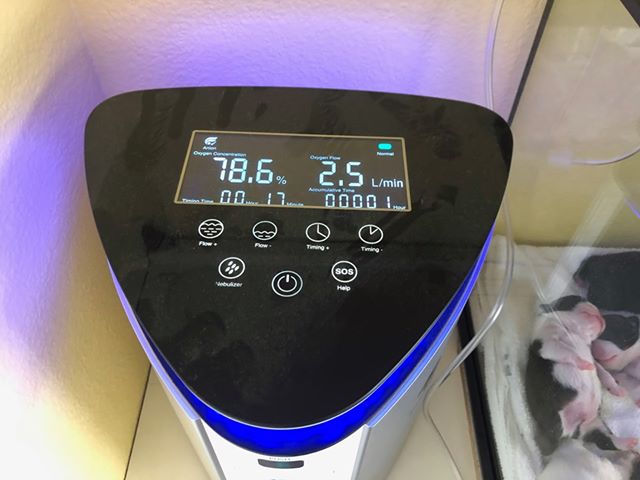
You have more work to do. Time to plan for success.
This article was not intended to be all encompassing. Rather it is a thought starter. We suggest:
- Consult with your veterinarian
- Purchase and read Canine Reproduction Neonatology
- Stock up on key tools and materials
- Develop contingency planning for transportation and the possibility of having puppies on the ground and an emergency C-section
- Order your Puppywarmer Incubator and Oxygen concentrator so that it arrives at least two weeks before your puppies are do. Run it for several days ahead of time. Get very familiar with it. You can become an expert well before the first puppy is born. We can help.
Summary
Large litters are a challenge. Planning is essential to success. With knowledge, the right materials on hand, and a Puppywarmer Incubator and Oxygen concentrator–you can greatly improve the health of your litter.

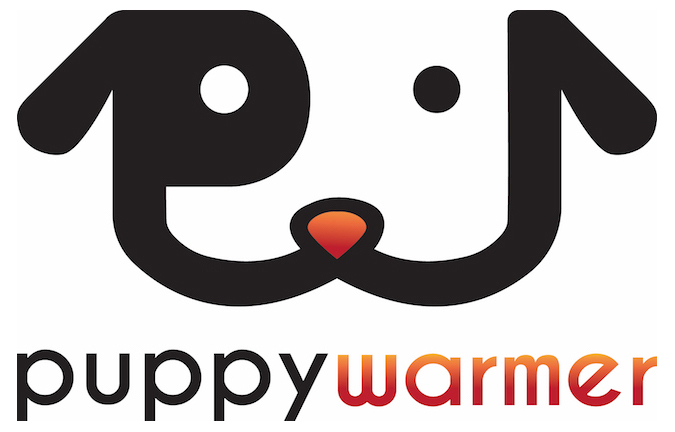
I AM SEARCHING FOR A INCUBATOR FOR CHIHUAHUA PUPPIES , I DON’T MIND SECOND HAND IN GOOD WORKING ORDER .I CANT AFFORD NEW .but I really want one like this shown or similar .EASY CONTROLS AS DON’T WANT TO MAKE ANY MISTAKES . I am not a starter ,have had chihuahuas for more than 30 years .please contact me
We don’t have second hand units for the UK–but we do have 230V units of the incubators and concentrators that will work in Europe.
Ken
ken@puppywarmer.com